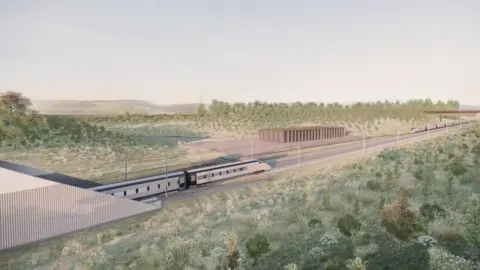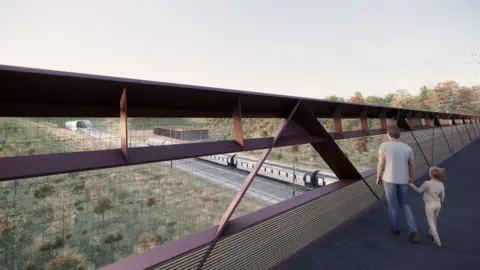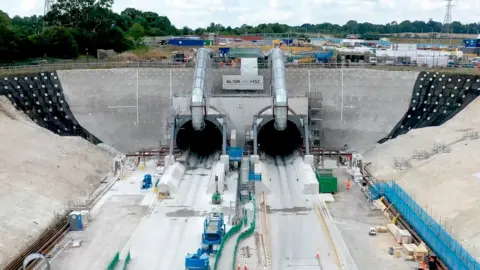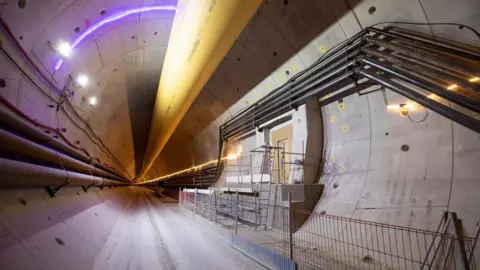HS2: Design of last visible part of Chiltern tunnel revealed
 Grimshaw-AlignJV
Grimshaw-AlignJVThe design of the last visible structure along the route of HS2's longest tunnel has been revealed.
The north portal of the 10-mile (16km) Chiltern tunnel, will be built low into the landscape between Great Missenden and South Heath in Buckinghamshire, HS2 Ltd said.
It will be partially visible from a footbridge over the railway.
It is one of seven "key design elements" which will be the only visible part of the twin tunnels.
The tunnels, which are between the M25 and South Heath, have five shafts for emergency access and/or ventilation near Chalfont St Peter, Chalfont St Giles, Amersham, Little Missenden and Chesham Road.
The other visible elements include the south portal near the M25 and the headhouses above the five shafts, which are mostly designed to resemble agricultural buildings.
 Grimshaw-AlignJV
Grimshaw-AlignJVThe design of the north portal includes two perforated concrete hoods covering the track, to avoid sudden changes in air pressure - and resulting noise - caused by trains entering and exiting the tunnels.
There will also be a single-storey ancillary building to house mechanical and electrical equipment.
HS2 Ltd said following feedback from the community, this building had been reduced in size and will now feature a green roof to help blend into the landscape.
To the north of the tunnel, the new high speed line will be set into a cutting for 1.8 miles (3km) on its approach to the Wendover Dean Viaduct, with more than 20 hectares of new woodland, shrubs and wildflowers typical to the Chilterns planted.
 HS2
HS2The Chiltern tunnel is the longest on the HS2 project, which is designed to improve links between London, Birmingham and the north of England.
Last month, the rail company said the halfway point of excavation had been reached with machines removing enough chalk and flint to fill more than 500 Olympic swimming pools since construction began in late 2021.
You can view HS2 Ltd's route map here.
The project has faced angry criticism about the impact it would have on the land the route would take, with campaigners fighting against plans to build on woodland.
 HS2
HS2
Find BBC News: East of England on Facebook, Instagram and Twitter. If you have a story suggestion email [email protected]
